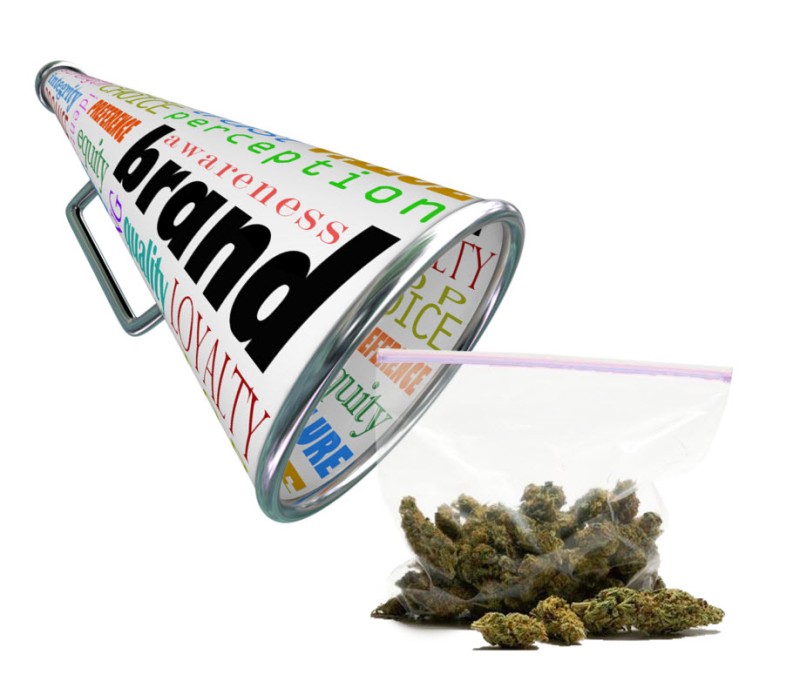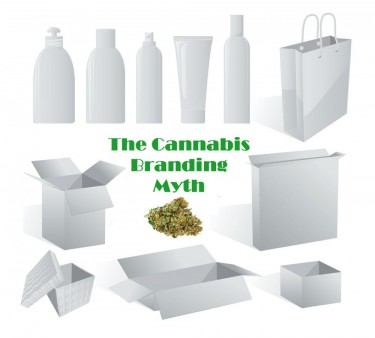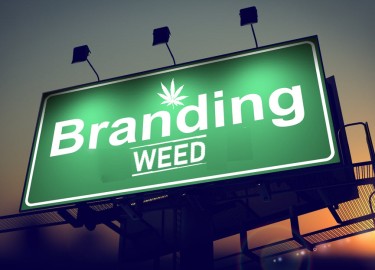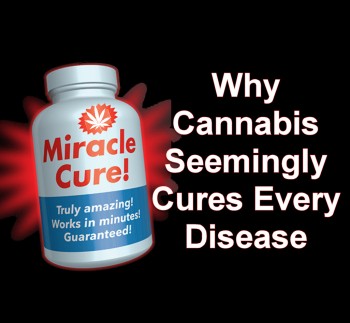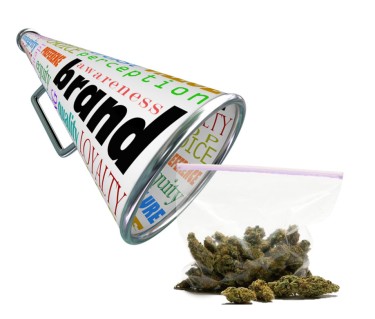
A new survey is out that confirms what every other study has reported in the past about cannabis branding and marketing, it just doesn’t matter to consumers, and they don’t remember what your logo, your colors, or your packaging looks like a few days after buying your product. The three factors they 100% do remember is how much your product costs, how well did the product work, and where they got the product.
There is a current wave of millennials and Gen Z'ers under 40 who run “ad agencies” and “branding companies” that want to convince you that how you package your product, what colors you choose, and what your logo looks like is super important in the cannabis industry, as it distinguishes your product from everyone else’ CBD, edibles, tinctures, or vape carts out there. Yet, to this point in the history of legal marijuana, no survey or study has even confirmed this, and just the opposite, every consumer survey ever done has shown just the opposite to be true. Price, effect, and location of sale have come back over-and-over as the top 3 influences for a marijuana consumer.
Why Does the Cannabis Branding Myth Continue to Exist?
There are 3 main reasons why the marijuana branding myth get perpetuated over and over in the cannabis industry.
The first is that the company or person peddling their branding story or business is trying to make money and pay their bills. It is in their self interest to get you to believe that branding is really important so that you agree to pay them anywhere from $5,000 to $50,000 for their expert branding services.
The second reason the myth continues is that companies, some desperate to stand out and create more sales, want to believe the myth and hope cutting a check to a marketing company will create millions in sales and miles of shelf space in dispensaries. Since the industry is so restricted in where and how they can advertise, brands are desperate for a “magic bullet check” that they can pay someone to create a good-looking product, and that will create an avalanche of sales.
Third, the customer affinity and loyalty eco-system that works so well for tech companies like Apple and Google, does not work well for a commodity, or in this case, a plant. Did you ever notice how all these millennials pitching “branding expertise” want your product to look like it belongs at the Apple store or a Nike display? Why would anyone think a stinky, smokable plant like cannabis should look like an iPhone or new Air Jordans? The 3 biggest influencers for millennials growing up, who are now running “ad agencies”, were Apple (Steve Jobs), Nike, and Disney/Coke. They love the words “sleek” and “slick”, but let me ask you, when has a cannabis plant ever looked sleek or slick?
Now, you can see why branding experts want cannabis products that look like iPhone boxes and dispensaries that look just like you are walking into an Apple store. It was their main influences growing up and what they are using as a baseline on what successful products and campaigns look like.
There is just one big problem with these stories, the data from every survey every done on cannabis consumers in the US or Canada says just the opposite. If you are paying an exorbitant sum for cannabis product branding advice, logos, colors, etc., you are getting bad advice and wasting money.
Affinity and brand loyalty works for the tech market but not for the cannabis market. Cannabis is turning out to be more like the wine market. Yes, you have a favorite brand or two, but you shop on price, sales, don’t care about the wine company’s logo, and you do remember if you liked that bottle of wine, how much it cost you, and where you got it. The results are almost identical to what every cannabis consumer survey says as well.
In fact the branding argument holds up much better when talking about DISPENSARY branding, as opposed to product branding in cannabis. You can see the buzz Cookies has created as a dispensary chain and what consumers feel affinity for in the marijuana market. Consumer are showing they want to tell people more where they got it, ie Cookies or MedMen, than what they actually bought there and ended up putting in their bag. Go figure, kudos to Berner for figuring this out early.
For example, isn’t the Cookies dispensary brand cool and you want to be associated with going there? Yes! What are their top 3 selling products? No idea.
The latest affirmation of this anti-branding, treat-it-like-a-commodity survey, comes from a Work Week article called, “Correctly Priced Cannabis in 2022”. While the article focuses on consumer price points that work in the US and Canada, it also digs into branding and what consumers think and remember about a cannabis purchase. Some highlights include:
Lower prices is the #1 influencing factor for Canadian cannabis consumers.
In the U.S, lower prices were consistently identified as one of the top three drivers in determining the cannabis products consumers selected, with 27% of respondents saying products prices influences their purchasing decisions.
34% of Canadian consumers said price matters most to them when choosing a product at a cannabis retail store.
American consumers also care about the product’s flavor and the THC content along with price, and are more likely to pay higher prices for products with strong flavor and higher concentrations of THC.
A brand’s competitors in a specific region, the markups retailers in a region are applying to their products, local and state regulations, costs, and tax structures all influence the cannabis product’s final price for consumers.
A brand’s reputation is not a top-10 influencer for U.S. consumers.
Just 18% of cannabis consumers surveyed said a brand’s reputation matters when they are making a final purchasing decision.
Their interesting conclusion or takeaway at the end was as follows:
Our Take
In a cannabis retail store, budtenders appear to be the first point of trust for cannabis customers, not brands.
Based on other data we’ve reviewed; customers seem to make the “trust” decision based on the products a cannabis retailer is choosing to stock in their store. We call this the art of cannabis curation.
Nonetheless, price is just one piece of the puzzle, and winning the trust of retailers is likely a much bigger component of succeeding as a cannabis brand in 2022.
The data that 4 out of 5 consumers don’t care about your branding is not new, it just keeps getting tested and re-affirmed. You can read articles like “The Cannabis Branding Myth”, “Cannabis Branding is Proving to Be Worthless”, and “The Billion Dollar Cannabis Debate – Does Branding Matter in Weed” to read about past stories and surveys that affirm the same three things about the consumer when he or she buys weed, price, effect, and location.
It would be too easy to end the article with a big nose in the air to branding experts and marketing majors, but let’s talk a solution. If this data is all true, what is the solution then?
Just reverse the results, just like the transitive property in math. When we see what consumers say is NOT important, just invert those statements to find out what IS important.
Huh?
We know the top 3 influences in a consumer's cannabis purchase are price, quality (effect), and location (ease of getting the product). So, if you want to win over consumers and sell a lot of cannabis product, build a good quality cannabis product that accomplishes the goal of the product, like getting high or pain relief, have it reasonably priced, and have it at as many locations as you can. As the Work Week article concluded, it is way more important to win over the dispensary owner than the actual consumer because just like wine, people will go with price, quality (desired result from drinking 2 glasses), and how far did I have to go to get it, or ease of purchase.
Sell a good product, cheap, and have it everywhere. Sounds a lot like the beer and wine market to me.
If someone tells you branding is key and your logo, colors, and packaging are super important, ask them to show you any data at all that confirms that statement is true with cannabis consumers. When they say a consumer identifies with a brand and creates affinity with brands that they feel defines them and they want to be identified with, say, “Yes, I see why that is true for tech and consumer products like Apple, Google, Nike, Telsa, Lululemon, North Face, but why do you think that is true for a pre-roll someone is going to smoke or a vape cart they are going to burn through in a week?”.
In the end, all the data, not just opinions, shows the consumer does not remember what they bought, your colors, your logo, your packaging, or even how much they took, but they 100% remember how much your product cost, did it work well, and how easy was it for them to get, i.e., they will drive 10 minutes but not 45 minutes for it. That is why getting in with purchasing managers and dispensaries owners should be your priority as opposed to fancy boxes and logos.
Remember as the Work Week article reports, “A brand’s reputation is not a top-10 influencer for U.S. consumers. Just 18% of cannabis consumers surveyed said a brand’s reputation matters when they are making a final purchasing decision.”
Branding is not even in the top 10 results when cannabis consumers listed reasons they purchased a certain product, and over 4 out 5 consumers (81%) said a brand’s reputation did not matter when making a final purchasing decision.
Game. Set. Match.
Do you know the #1 selling beer in America? Budweiser and Bud Light.
Do you know the number selling price point for a bottle of wine in America? Under $10.
Don’t overthink this one. It’s a plant, not a smart phone.
Now go take your local dispensary owner out to dinner and get him or her some courtside seats. That is a much better investment for the success of your product than a new logo and packaging box. Maybe throw a few gift cards from Dunks or Starbucks to the budtenders as you visit a dispensary, too! Remember, they are the first point of contact to establish "like, know, or trust" for your brand.
IS BRANDING A WASTE OF MONEY IN WEED, READ MORE...
THE CANNABIS BRANDING MYTH, WHY CONSUMERS DON'T REMEMBER YOU.
